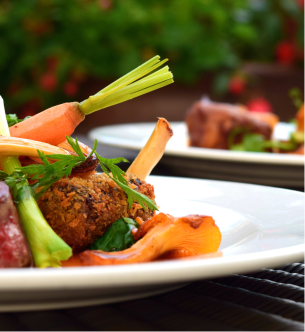
More restaurant delivery orders feature a promotion, according to our study with Intouch Insight. | Photo: Shutterstock.

Restaurants’ value war isn’t just being played out on delivery apps and with new value deals. It is also evident on third-party delivery apps.
Promotions are prevalent on mobile apps such as DoorDash, Uber Eats and Grubhub. More than half, 52%, of restaurant orders on those third-party apps featured a promotion, according to our annual look at delivery services with the secret shopping firm Intouch Insight.
That was moderately more than the 44% of third-party convenience-store orders that featured a promotion.
Maybe more notable: It was far higher than the first-party delivery orders that featured a promotion. Just 32% of first-party delivery orders from companies like Papa Johns and Domino’s featured an offer.
You can see our initial report on the delivery study here and the comparison of first-party and third-party delivery here. And you can see the entire study from Intouch Insight here. The entire thing will also be presented at the upcoming FSTEC restaurant technology conference in Orlando.
The results confirm the eye test. Check out Uber Eats or DoorDash and the promotions from restaurant chains and independents are commonplace: Discounts on orders, free delivery offers, etc. It’s more difficult these days to order without a promotion, in fact.
The promotions do improve customer satisfaction on delivery because, after all, people love a deal. And it’s not surprising to see this sort of activity on the aggregators’ apps.
Delivery apps are giant, online marketplaces where companies vie for the attention of perusing customers. Companies thus have to take more aggressive steps to get that attention. So they pay the companies for better spots on the apps and offer discounts.
And restaurants need top-line sales right now. So they do what they can to boost sales on an important ordering channel.
First-party delivery does not have to use those types of promotions to get customers to order from them, compared with someone else, because consumers are already seeking them out. The promotions are there because restaurants are offering a lot of deals right now, and presumably the promotions available from restaurants themselves are better than the promotions they’re putting on the delivery apps.
The problem with third-party delivery promotions, obviously, is the cost restaurants incur to provide delivery.
As it is, the growth of online aggregators has altered the cost structure inside restaurants, while adding additional headaches for operators in the form of stolen food or unfulfilled delivery orders or other issues.
Restaurants are setting higher prices for their menu items on the delivery apps than they do in their own locations—by an average of $1.85 per menu item. That was up 8.1% compared with a year ago, about double the overall rate of menu price inflation. Operators are being aggressive in recovering their costs.
But the promotion-heavy environment on the apps only works against that. And it can create problems for franchisees, many of whom have complained to me about the number of discounts they’re seeing on delivery orders. Also, like any other discount strategy, the more you offer a promotion, the more a customer learns to look for it. A 52% promotion rate certainly goes a long way to accomplish that.
It also highlights the continuing evolution of the aggregators themselves. Delivery is no longer a brand-new service in need of introductory discounts to get people to try it. The apps have their own customers who love the convenience and are willing to pay it.
But now those apps are so crowded with competitors that restaurants have no choice but to push discounts to be visible. Even if it hurts the profitability of what should be a free-spending group of customers.
#war #fought #thirdparty #delivery #apps




